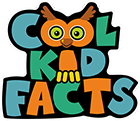Welcome to Facts Vibes! Delve into the world of corn with us as we uncover 10 fascinating facts about this versatile crop. From its ancient origins to its modern-day significance, join us as we explore the intriguing and surprising aspects of this staple food. Let’s get ready to be amazed by the wonders of corn!
Exploring the Fascinating World of Corn: 10 Intriguing Facts
Exploring the Fascinating World of Corn: 10 Intriguing Facts
1. Ancient Crop: Corn, also known as maize, has been cultivated for thousands of years by indigenous peoples in the Americas.
2. Versatile Uses: Corn is used not only as a food staple but also in the production of ethanol, biofuels, and various industrial products.
3. Biodiversity: There are thousands of different varieties of corn, each with its own unique characteristics and uses.
4. Nutritional Value: Corn is a good source of several nutrients, including fiber, vitamins, and antioxidants.
5. Global Production: Corn is one of the most widely grown crops in the world, with major producers including the United States, China, Brazil, and Argentina.
6. Genetic Modification: Many modern corn varieties have been genetically modified to enhance traits such as pest resistance and yield.
7. Cultural Significance: Corn holds significant cultural and ritualistic importance in many indigenous communities.
8. Environmental Impact: The large-scale cultivation of corn can have environmental implications, including soil erosion and water usage.
9. Animal Feed: Corn is a major component of animal feed for livestock around the world.
10. Research and Innovation: Ongoing research seeks to further understand and utilize the genetic diversity of corn for improved sustainability and food security.
Discover the diverse and compelling world of corn, where its history, uses, and impact continue to captivate researchers and enthusiasts alike.
Most popular facts
Corn was first domesticated in southern Mexico around 9,000 years ago.
Corn was first domesticated in southern Mexico around 9,000 years ago.
There are six different types of corn: flint corn, dent corn, flour corn, sweet corn, popcorn, and pod corn.
There are six different types of corn: flint corn, dent corn, flour corn, sweet corn, popcorn, and pod corn.
The United States is the world’s largest producer of corn, with Iowa being the leading corn-producing state.
The United States is the world’s largest producer of corn, with Iowa being the leading corn-producing state.
Corn is a rich source of carbohydrates, fiber, vitamins, and minerals.
Corn is a rich source of carbohydrates, fiber, vitamins, and minerals.
The average ear of corn has about 800 kernels in 16 rows.
The average ear of corn has about 800 kernels in 16 rows.
Corn is used to make a vast array of products including ethanol, corn syrup, cornstarch, and animal feed.
Corn is used to make a vast array of products including ethanol, corn syrup, cornstarch, and animal feed.
Native Americans taught European settlers to grow and prepare corn, which helped prevent starvation during the early years of the colonies.
Native Americans taught European settlers to grow and prepare corn, which helped prevent starvation during the early years of the colonies.
Corn silk has been traditionally used in herbal medicine for its diuretic and anti-inflammatory properties.
Corn silk is traditionally used in herbal medicine for its diuretic and anti-inflammatory properties.
Some varieties of corn can grow to be as tall as 12 feet (
Some varieties of corn can grow to be as tall as 12 feet.
7 meters).
The 7 meters is a crucial piece of information in the context of measurement and distance.
Corn is a staple food in many parts of the world, especially in Latin America, Africa, and Asia.
Corn is a staple food in many parts of the world, especially in Latin America, Africa, and Asia.
The oldest known corn cobs, dating back to 5,600 BC, were discovered in a cave in Mexico.
The oldest known corn cobs, dating back to 5,600 BC, were discovered in a cave in Mexico.
Corn is a warm-season crop that requires ample sunlight and consistent watering to thrive.
Corn is a warm-season crop that requires ample sunlight and consistent watering to thrive.
Corn was originally cultivated for its use as a grain, but it is now also widely grown for silage and fodder purposes.
Corn was originally cultivated for its use as a grain, but it is now also widely grown for silage and fodder purposes.
Each tassel on a corn plant releases as many as five million grains of pollen.
Each tassel on a corn plant releases as many as five million grains of pollen is an important fact about corn pollination.
Corn can be grilled, boiled, roasted, or ground into flour and is a versatile ingredient in various cuisines worldwide.
Corn is a versatile ingredient that can be grilled, boiled, roasted, or ground into flour and is used in various cuisines worldwide.
In conclusion, corn is a fascinating and versatile crop that has been an important part of human history for thousands of years. Its significance in various cultures and industries around the world showcases its diversity and importance. As we continue to delve into the world of agriculture and food production, it’s crucial to appreciate the 10 interesting facts about corn that highlight its unique characteristics and impact on society.
